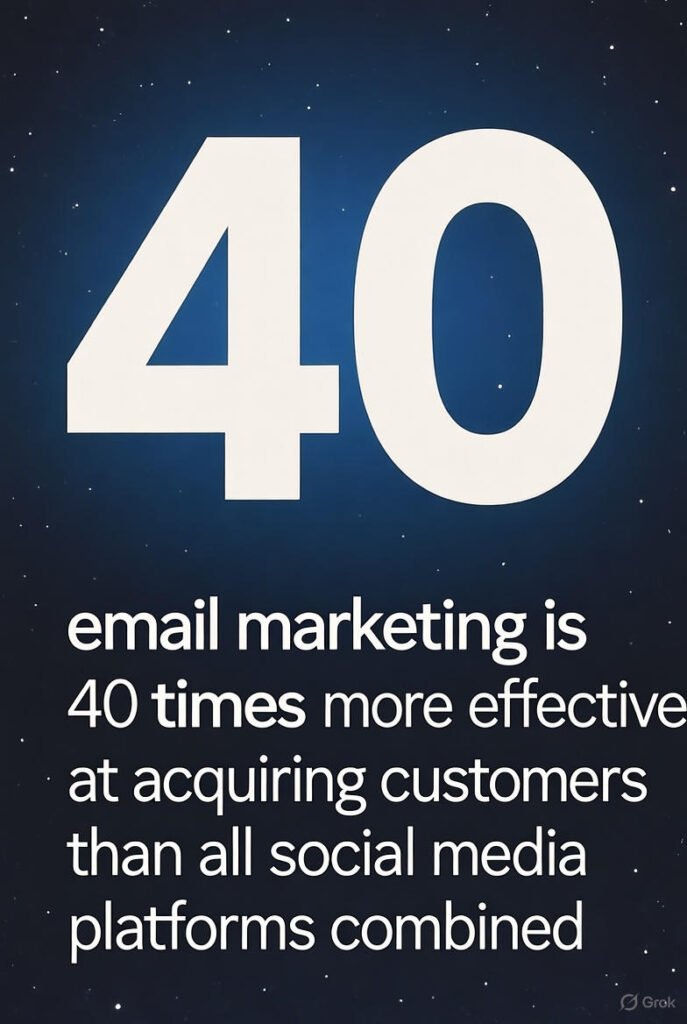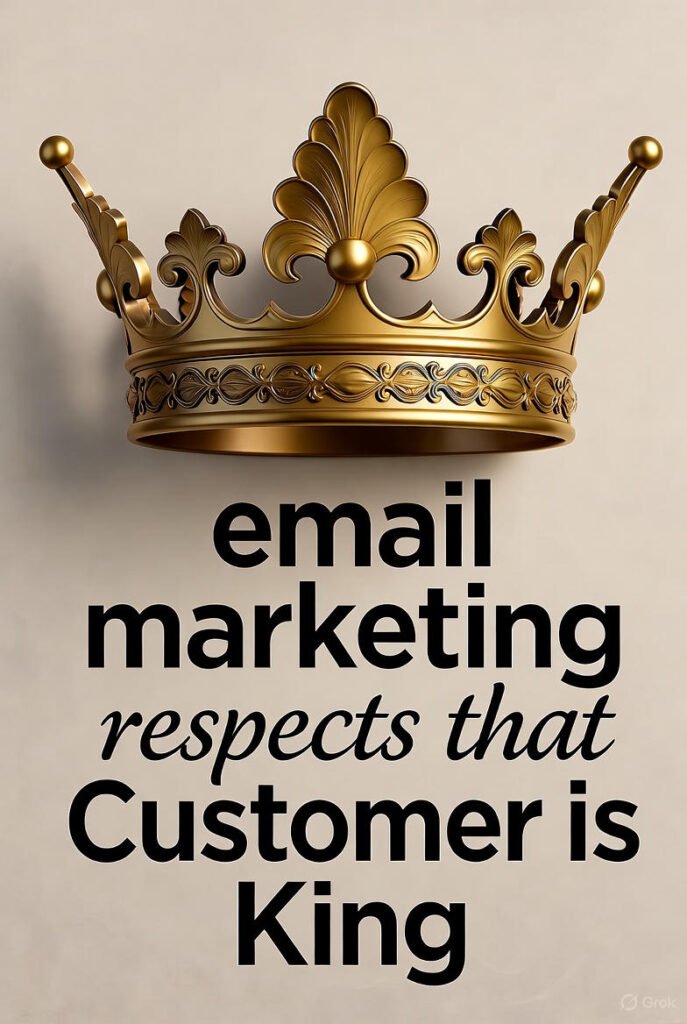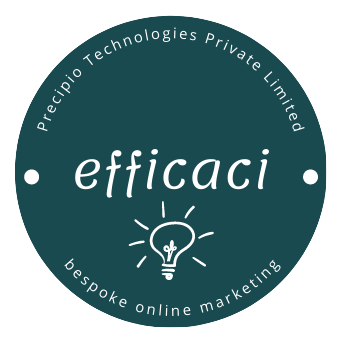When I first discovered the power of email marketing as a communication channel, I was struck by how personal, scalable, and data-driven it could be. Unlike the fleeting impact of social media posts or the budget-heavy demands of paid advertising, email had something timeless — a direct line into the digital lives of real people. Over time, I learned that email is not just a sales tool; it’s one of the most effective forms of customer relationship communication ever invented.
In this deep-dive, I want to explore what makes email marketing so impactful, why it remains 40 times more effective than social media, and how businesses can harness its potential to communicate authentically and profitably.
Why Email Marketing Is Important
Email marketing is the cornerstone of modern digital communication. It bridges businesses and customers with a sense of intimacy and permission that few channels can achieve. When a person gives you their email address, it’s not a casual gesture — it’s an act of trust.
From a strategic viewpoint, email offers:
- Direct ownership of audience: Unlike followers on social platforms, your email subscribers belong to your list — not an algorithm or external platform.
- High ROI: According to most industry studies, every dollar spent on email marketing returns between $36 and $42.
- Consistency of presence: Emails land right where attention is most focused — the inbox — fostering long-term relationships.
- Precision targeting: With segmentation, automation, and behavioral data, businesses can send exactly the right message to the right person at the right time.
To me, the biggest reason behind its importance is emotional — it allows for genuine, sustained dialogue that feels personal, even when automated.
The 40x Effectiveness Rule

One of the most quoted studies in the marketing world revealed that email marketing is 40 times more effective at acquiring customers than social media platforms combined. This isn’t just a metric; it’s a statement about human behavior.
Social media thrives on distraction; email thrives on intention. When someone opens your email, they’re willingly giving you focused attention, even if just for a few seconds. That micro-moment of undivided attention is more valuable than a hundred passive impressions on a scrolling feed.
I’ve seen this difference firsthand — a well-crafted email campaign often drives conversions and engagement that outperform even the most viral social content. It’s not that social media lacks power; it’s that email nurtures depth where social thrives on breadth.
Email’s Captive Audience Advantage
A successful email subscriber base is not just an audience — it’s a captive community. These are individuals who opted in because they care about what you offer or say.
Unlike random web traffic or fleeting ad views, subscribers engage willingly and repeatedly. That ‘captive’ nature transforms communication. It creates an environment where content doesn’t feel like intrusion; it feels like value delivered.
This continuous permission loop — opt-in, receive, engage, and respond — forms the true ecosystem of relationship marketing. As long as value precedes sales, the inbox becomes a trusted space, not a cluttered ad field.
The Customer Is King — and Email Respects That
When I think about customer-centered marketing, email automatically comes to mind. It is inherently consent-based. You cannot email someone without their permission (at least, not ethically or legally). This makes the customer the ultimate gatekeeper — and that’s a beautiful thing.
By putting the recipient in control, email marketing as a communication channel forces us to practice humility in communication. We must earn every open, every click, and every response. Each message must justify its presence in someone’s inbox.
In this way, email marketing naturally aligns with customer-centric values — personalization, relevance, and respect for attention.

The Power of Email Content
The soul of email marketing lies in its content. No amount of design sophistication or automation can compensate for dull or irrelevant writing.
Strong email content blends utility, storytelling, and authenticity. It educates while it sells, inspires while it informs. I see effective email content as having three layers:
- Informational Layer – Providing practical value through tips, updates, or educational content.
- Emotional Layer – Connecting through tone and voice to establish trust and relatability.
- Action Layer – Driving meaningful next steps through clear, subtle, and compelling calls-to-action.
When done right, your emails become not just messages but moments — little sparks of connection that build loyalty over time.
Personalization and Automation: The Modern Backbone
Advances in automation and AI have transformed how we view email sequences. What used to be a manual, one-size-fits-all approach has evolved into intelligent, behavior-driven communication.
- Segmentation lets you categorize based on demographics, behavior, or preferences.
- Automation ensures timely responses, even while you sleep.
- Dynamic content allows personalization so precise that every recipient feels you wrote just for them.
Despite these technical leaps, the human touch still triumphs. Automation works best when it amplifies empathy rather than replaces it.
Measuring Success and Building Trust
Metrics matter — open rates, click-throughs, conversions, and unsubscribe patterns all tell you how engaged your audience is. But success in email marketing is not purely numerical.
True success is when your audience anticipates your next email rather than ignores it. It’s when your communication fosters trust deep enough for subscribers to act — not out of manipulation, but out of mutual respect.
That, to me, is the ultimate KPI of using email marketing as a communication channel: sustained relevance built on genuine trust.
The Future of Email Communication
Even as new channels emerge — from chatbots to short-form video — email remains unshaken. Its adaptability keeps it alive, evolving from plain-text newsletters to immersive, interactive experiences with embedded media and AMP technology.
The future will see hyper-personalized campaigns, AI-driven predictions of user needs, and seamless integration with omnichannel touchpoints. Yet, the philosophy will remain the same — meaningful, respectful, value-driven communication.
In a world overwhelmed by notifications, I still believe email is where the heart of true digital communication beats. It’s private, potent, and profoundly personal — a medium where attention is earned, not demanded.
That’s the real essence of email marketing as a communication channel — not just a tool to market, but a bridge to connect.


0 Comments